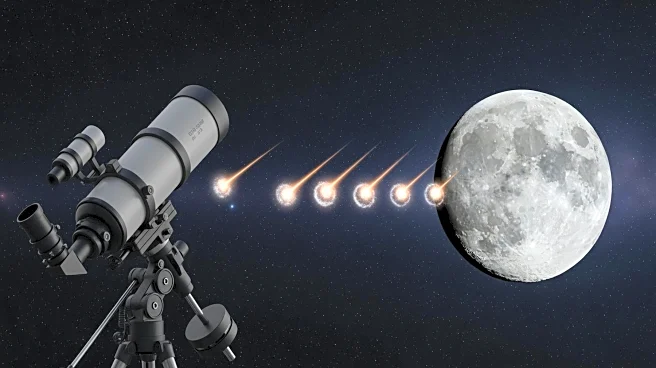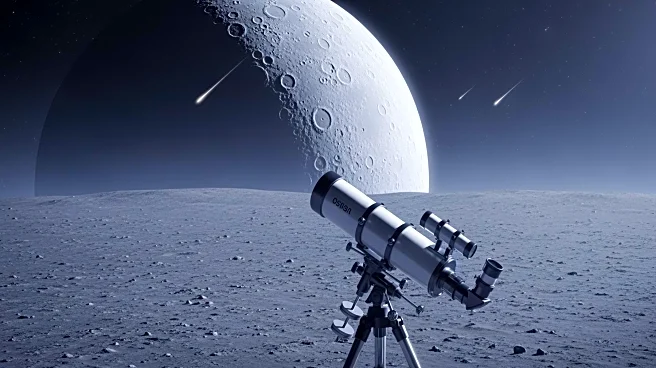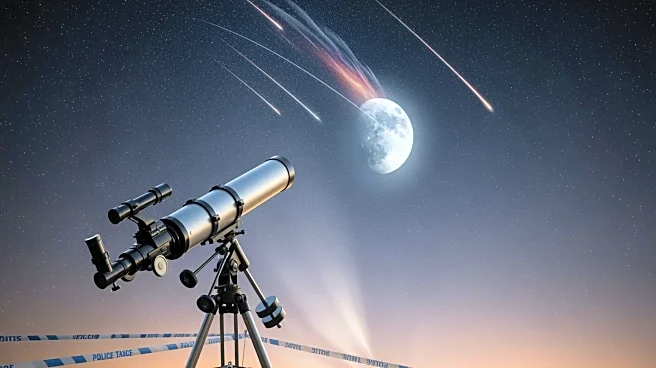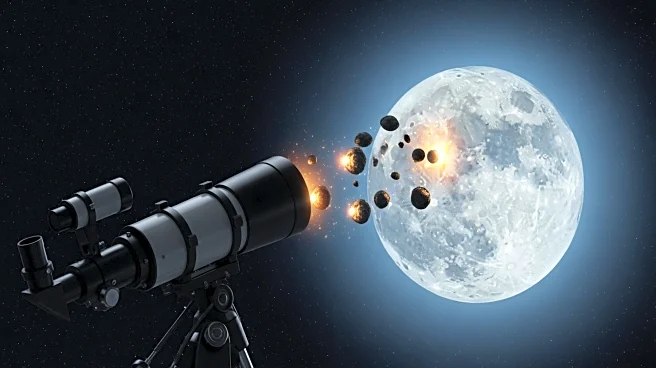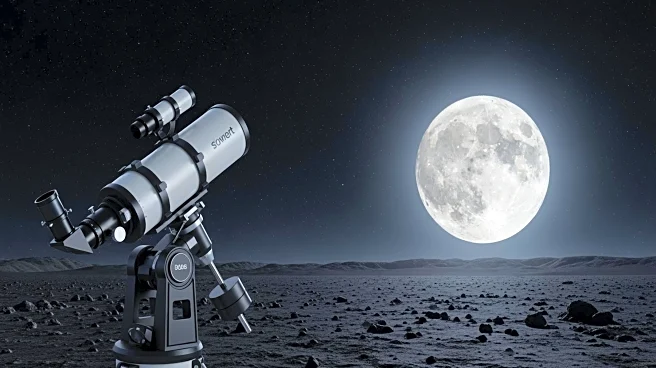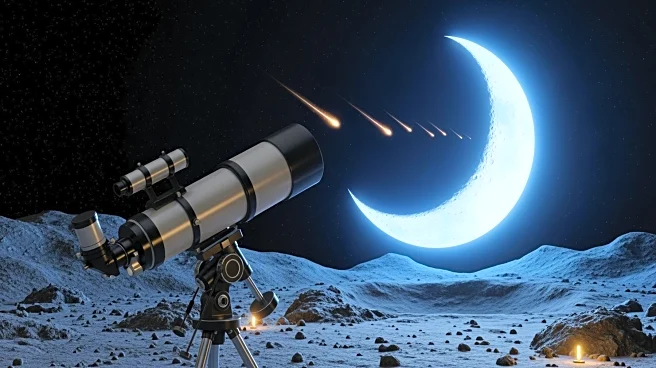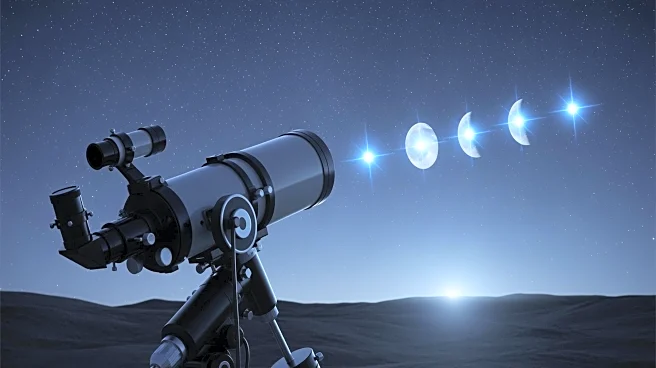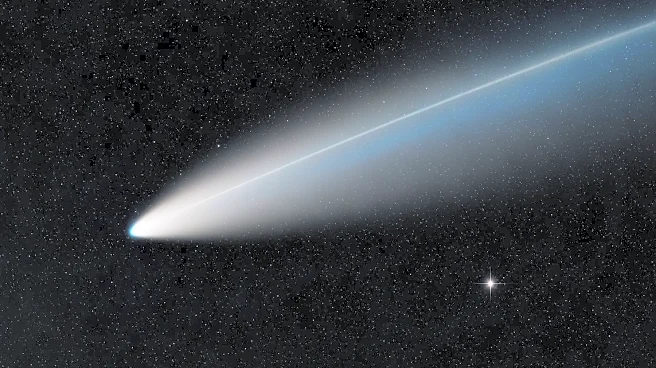What's Happening?
Two meteor impacts were captured on the moon by Daichi Fujii, an astronomer at the Hiratsuka City Museum, on October 30 and November 1. The flashes were recorded using telescopes set up in two locations,
Fuji and Hiratsuka. These impacts are suspected to be from the Southern Taurids or Northern Taurids meteor showers, which are known for producing bright fireballs. The moon's lack of atmosphere allows meteors to directly impact its surface, creating craters that can be observed from Earth.
Why It's Important?
The moon's vulnerability to meteor impacts is a significant consideration for future lunar exploration and the establishment of bases. Understanding the frequency and energy of these impacts can help assess the risks to astronauts and equipment. NASA's Lunar Impact Monitoring program emphasizes the importance of tracking these events to inform future missions. The moon's surface, marked by numerous craters, serves as a record of its history of impacts, providing valuable data for scientific study.
What's Next?
Continued observation and documentation of lunar impacts will enhance our understanding of the moon's environment and inform strategies for mitigating risks associated with meteor strikes. Future space missions may incorporate findings from these studies to improve safety measures for lunar bases. As the lunar impact rate remains uncertain, ongoing research is necessary to refine our knowledge of these phenomena.
Beyond the Headlines
The study of lunar impacts offers insights into the broader dynamics of celestial bodies and their interactions. These observations contribute to our understanding of the solar system's history and the processes that shape planetary surfaces. Ethical considerations of space exploration, including the preservation of celestial bodies, may be influenced by findings from lunar impact studies.
